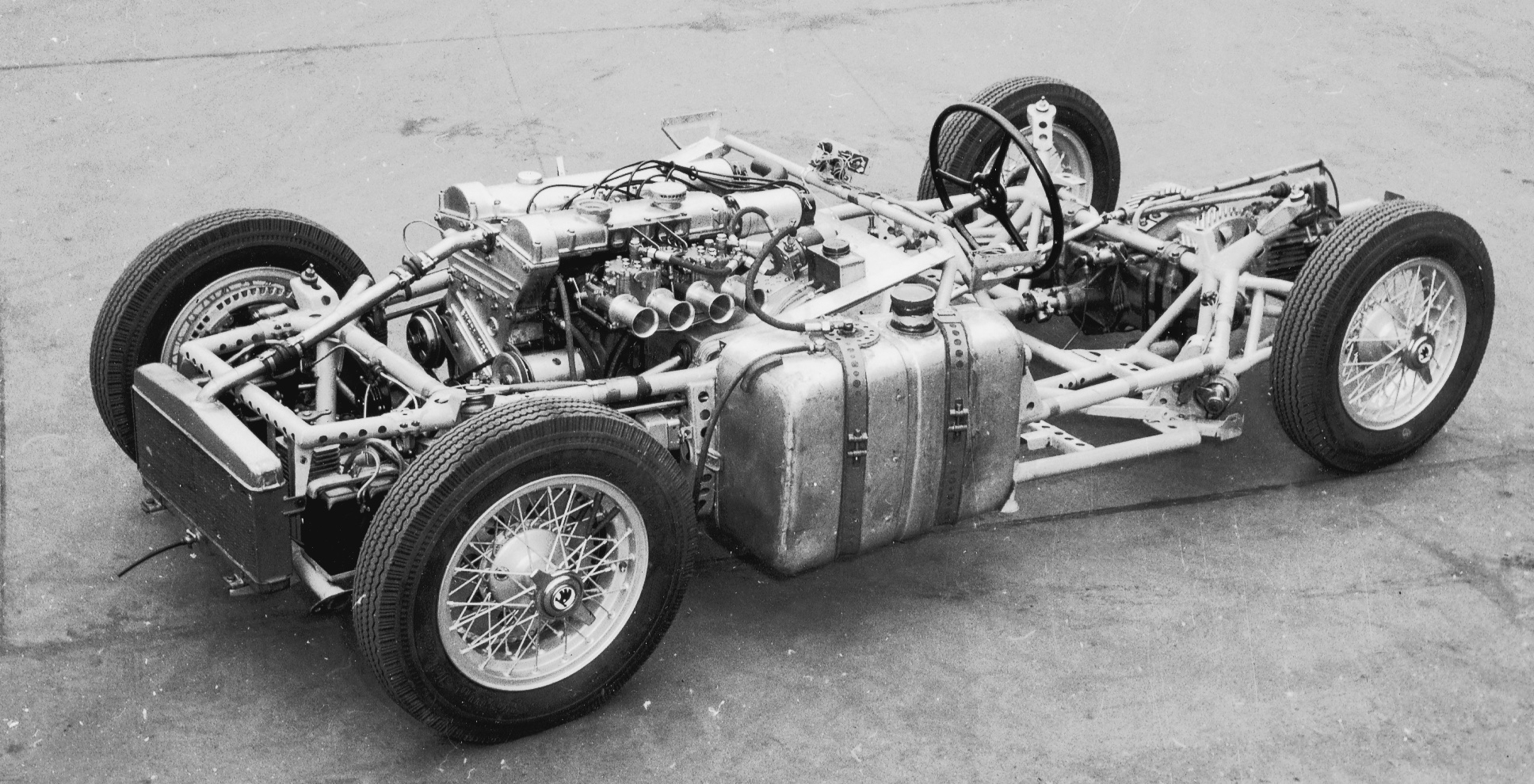Skoda’s most prominent motorsport exploits have taken place on loose surfaces in rallying, from the days of rear-engined 130Rs to more recent R2-class Fabias. But back in the 1950s the Czech brand fancied its chances at endurance racing – and now Skoda has brought one of those endurance racers back to life.
To celebrate 120 years of Skoda Motorsport, a team of people from both the Skoda Museum and the Skoda Auto Prototype Centre have paintstakingly reconstructed an example of the pretty Skoda 1100 OHC Coupe from 1959.

Just two OHC Coupes were ever built in period, from 1959 to 1960, based on the open-cockpit 1100 OHC. The project began in 1956 and the first OHC was ready in late 1957. Skoda still owns two copies of the GRP-bodied OHC – one residing in the Skoda Museum, and the other as part of its heritage fleet in the UK. Both are in full working order.




Work continued on the project in 1959, with attention turning to a closed-cockpit design with a thin-walled tube spaceframe and, in contrast to the open cars, aluminium bodywork. Suspension was by double wishbones up front and trailing arms at the rear, while power came from a 1.1-litre, 92bhp inline four. With an unladen weight of 555kg and an aerodynamic form, top speed was said to be as much as 124mph.
Skoda built two 1100 Coupes, which competed in several events from 1960 to 1962. When endurance racing rules no longer accommodated the cars, the company sold them on in 1966, but both were unfortunately destroyed in road accidents.
Out of the ashes – quite literally in the case of one of the vehicles, which had caught fire, melting away its distinctive low-slung bodywork – Skoda used the components of both cars as the basis for its reconstructed 1100.
Thankfully, someone at the company in the 1960s was a stickler for record-keeping, as the Museum and Prototype teams managed to rustle up the original technical documentation for the car, from descriptions of each production section to technical drawings showing individual assemblies.




The engine from one of the damaged originals required only modest work to renovate, while the fire-damaged car donated its spaceframe, carefully reconstructed to original specification.
While original techniques were used to form the aluminium bodywork – each panel hammered by hand, then welded and riveted together – the team did make use of the latest knowledge in modelling to carefully replicate individual elements of the design. With several parts originally taken from contemporary road cars, the team also spent time sourcing replacements on the open market.
The effort has been worth it, visually at least, and the car will take pride of place in the Skoda Museum alongside its 1957 open-topped cousin. Given Skoda has been more than happy to use the spider variant, we’re also hoping to see the coupé out and about before too long. Could an appearance at Goodwood be on the cards?
Read more
Top ten cars from behind the Iron Curtain
Elmo: The electric Škoda pickup you’ve never heard of
270mph in 1938: The 16-cylinder Auto Union was an engineering feat









Wonderful project and a very interesting, centralised, chassis layout, though very questionable fuel tank positions! It’s a pity that the reproduction body is not quite as elegant as the original and it appears that it all went wrong from the top of the front wings rearwards. There is a high point of the front wings on the copy whereas the original flow seems to be, from that point onwards, parallel to the ground. Note the rear reflector on the original body; it is above the rear wheel arch but below it on the copy.